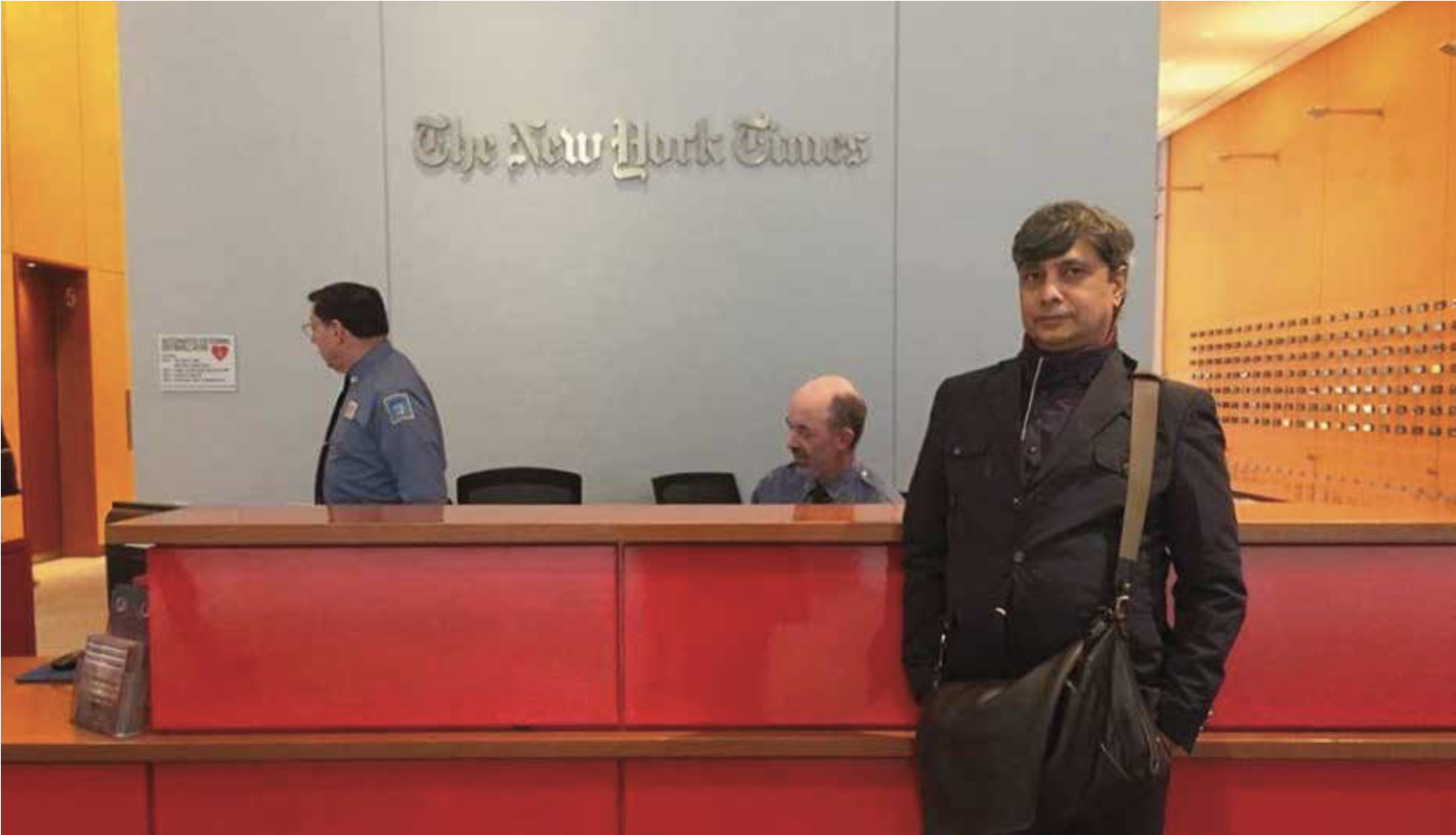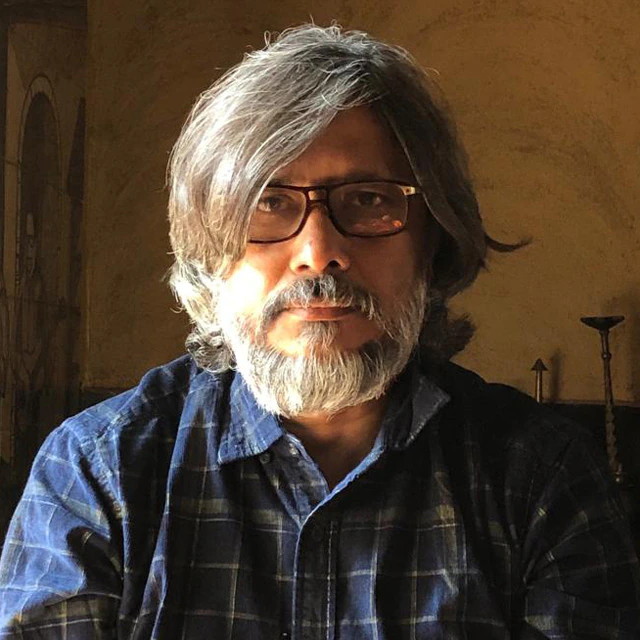Shubhrangshu Roy launched the Financial Chronicle on April 16, 2008, at the height of the US sub-prime crisis, in less than three months of the newspaper’s announcement on January 22; he launched all its five editions within a span of 12 months, through the excruciating period of the global economic meltdown; he launched its Weekend issue on September 10, 2011.
Shubhrangshu also conceptualised and launched the web edition of Financial Chronicle, which was originally designed and intended as India’s first business networking platform. Mydigitalfc.com was also the first Indian print/digital media platform to experiment with mobile journalism (now popularly known as ‘mojo’) by empowering reporters with smartphones to broadcast live video interviews.
His other pioneering works at FC included three successive “Signature Editions” of the annual Budget issues, personally autographed by the then finance minister Pranab Mukherjee; the annual yearend feature on the FC Businessman of the Year; which was recognised in corporate circles for its incisive analysis and unbiased selection procedure. Besides, the annual New Year special issue was very well accepted both in intellectual circles and among FC’s committed readers.
Roy introduced the concept of “comic book” style of reporting on personal finance that was subsequently adopted for investor education by leading Indian insurance companies at the behest of the Union finance ministry. He also created an exclusive first-of-its-kind beat on sustainable luxury by inducting a British research scholar in his team to write exclusively on the subject.
These records remain unsurpassed in Indian media.
At launch of the Delhi edition of Financial Chronicle, the then prime minister, Dr Manhmohan Singh observed in a written message:
“It is noteworthy that a business paper is being launched from the capital at a time when the economy is experiencing major challenges. These are challenging times for policymakers, businesses and investors. At this crucial juncture, reporting on business issues objectively and with brevity is the need of the hour. I am confident that Financial Chronicle would play a positive and constructive role with responsible reportage and contribute to informed and intellectual debate in the country.”
Before taking up his last assignment at DCHL in November 2007, Shubhrangshu worked for the strategic business group of Bennett, Coleman & Co Ltd., publishers of India’s two flagship broadsheets, The Times of India and The Economic Times. There he directly related to the company’s board of directors, as member of its brains trust. He was part of the BCCL strategic team for the six months in 2007, where he spearheaded key investment concepts in frontier areas as an ideator, creative thinker and negotiator.
Prior to taking up the assignment at BCCL, Roy had been a journalist for 20 years, of which he spent 11 years at The Economic Times, successfully researching and executing new journalistic concepts in writing, editing, design and production.
During his stint at The Economic Times, he is credited with the Indian media’s only on-record interview with Manmohan Singh as the country’s prime minister. Roy pioneered the coverage of national elections in ET between 1996 and 2004, which were recognised as best in class among all mainstream dailies. He has reported and commented on every national election since 1989.
Roy has interviewed leading global CEOs in the decade of the 1990s, including Paul A Allaire, chairman and CEO, Xerox Corp; Alex J Trotman, chairman Ford Motor Co.; Eckhard Pfeiffer, president and CEO Compaq Computer Corp; Charles Miller Smith, chairman ICI plc; Yves Carcelle, president and CEO Louis Vuitton; and Lynn Forester de Rothschild, president and CEO ELR Holdings LLC; among others. He extensively reported on the India strategies of IBM, Xerox, Compaq, LMVH, Enron and other Fortune 500 companies.
At home, Roy made successful forays in reporting on the business of poverty in one of India’s remotest districts, Kalahandi in Orissa. He also reported on rural prosperity in Punjab; separatism in Kashmir; and once spent 36 hours in the campus of a successful Bangalore-based software firm, exploring and reporting on the hidden world of Indian IT smiths.
Roy has reported extensively on the family histories of India’s big businesses. He was part of ET’s core team for its annual Budget editions, and subsequently at FC, designed and spearheaded its Budget coverage, which was repeatedly peer reviewed as the best in print journalism for seven years running.
In his editorial assignment at ET, as Senior Editor, he revamped the newspaper’s Sunday edition as an exclusive upper crust product focusing on India’s super rich. While revamping Sunday ET, Shubhrangshu launched a new beat for business journalists in the film and entertainment sector.
Roy’s other successful engagements with ET included launch of the paper’s city edition from the north Indian town of Chandigarh. He also strategised and executed the revamp of ET’s Ahmedabad edition and the upcountry (outstation) edition of ET Delhi. Besides, he launched the popular feature supplement ET Travel. At ET, he also wrote a popular fortnightly column Abracadabra on its Edit page, commenting on diverse human interest subjects ranging from business to corporate history, politics, sociology, technology and governance. Abracadabra was among the most visited columns on ET’s website.
In his last role at FC, Shubhrangshu took a break from regular opinion making, but wrote insightful yearend reviews and occasional commentaries under the title MIND OF THE MAVERICK.
Prior to joining The Times Group, Shubhrangshu spent 8 successful years as a business/economic reporter in various Indian publications. During those initial years in reporting assignments, Roy covered almost every economic ministry in Delhi, from agriculture and labour to civil aviation, transport, oil and natural gas to the big three ministries of commerce, industry and finance.
He did a short experimental stint with TV in 1995 before shifting to ET. When the Kolkata-based Ananda Bazar Group launched one of India’s first business news programmes on Doordarshan, titled Business Breakfast, with politician Jairam Ramesh as anchor in 1995, Shubhrangshu joined the initiative to lead a team of young reporters and business analysts, in one of India’s early experiments in television reporting on business. Here, he made a successful transition from “black and white” print reporting to conceptualising stories in colour and dramatizing reports with visual appeal. This subsequently helped him initiate the transition to colour designing and printing at The Economic Times, where he initially joined as Coordinating Editor. It also helped him introduce visual imagery to staid business reporting. For the first time, he launched visual drama in ET’s coverage of the general election in the summer of 1996, that went on to set the gold standard of election coverage in mainline broadsheets.
Shubhrangshu joined The Asian Age as Chief of Business Bureau in 1993 as part of an editorial core team that launched the broadsheet from New Delhi, Bombay and London on February 16, 1994. He helped set up the larger editorial team of The Asian Age; conceptualised Business Age as an independent eight-page pull-out, a first for a general English daily in India; managed a team of young reporters and copy editors; and groomed a generation of journalists who are now successful in their individual pursuits.
Here, he also reported extensively on the inside story of how India went on to mortgage its gold with the Union Bank of Switzerland (UBS) in 1991 and the key players involved in that historic drama. He also reported extensively on the Enron saga, India’s first attempt at privatisation and foreign investment in the power sector, and its subsequent failure.
At The Pioneer, where he was appointed the Deputy Chief of Business Bureau in January 1993, Shubhrangshu wrote extensively on the initial years of economic reforms. He also broke the news on notorious gangster Dawood Ibrahim’s investments in the since defunct East West Airlines; and Priyanka Gandhi’s first and only brush with a professional career as teacher at a nondescript South Delhi nursery.
At Business Standard (1989-92), he performed adrenaline-pumping assignments, reporting extensively on the controversy surrounding the purchase of the Airbus A-320 by the Rajiv Gandhi government; the opening up of the civil aviation sector for the first time by Arif Mohammad Khan (aviation minister in the VP Singh government), and subsequently by Madhav Rao Scindia (in the Narasimha Rao government); the portfolio management scheme fiasco by Air India and Vayudoot as part of the wider Harshad Mehta stock market scam; and the controversies surrounding Indian Airlines. He also extensively reported on the Mandal commission (caste based job reservation) agitation and the 1991 economic reforms.

Roy joined the Financial Express in 1987 as a rookie after a one-month internship at the Hindustan Times as part of his PG journalism programme. His first major assignment at FE was the coverage of the largest farmers’ agitation of that era in a western UP town under the leadership of Mahendra Singh Tikait in the winter of 1987-88.
At FE, he also reported extensively on India’s policy reviews by the Rajiv Gandhi government on privatisation of the defence-industrial complex and the power sector, besides the merger of the Union ministries of industry and commerce on the lines of Japan’s MITI. All these changes became reality only over the next 25 years.
Shubhrangshu has studied at well-known missionary schools in India.
He passed ICSE (Class X) in 1980 and ISC (Class XII) in 1982.
Roy graduated with Honours in Political Science from Jadavpur University, Calcutta in 1985.
He belongs to the 1987 class of journalism at the Indian Institute of Mass Communications, Delhi.


